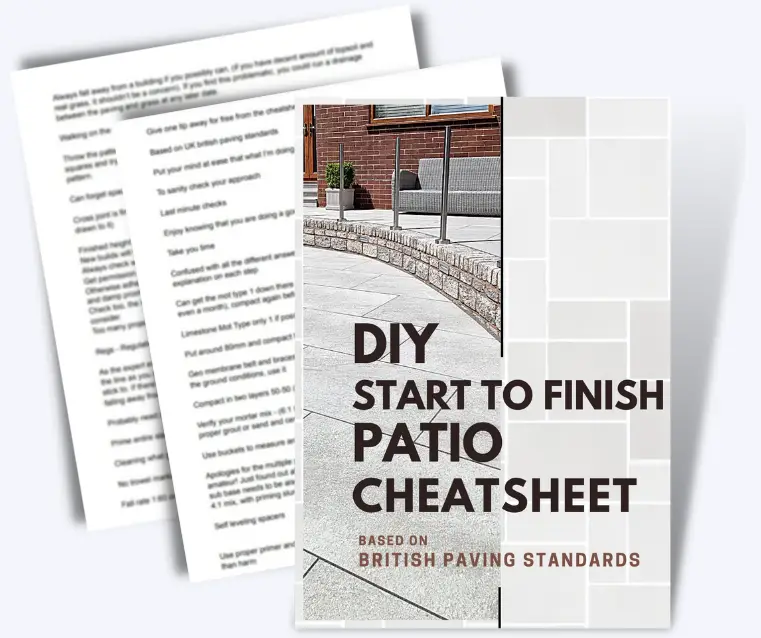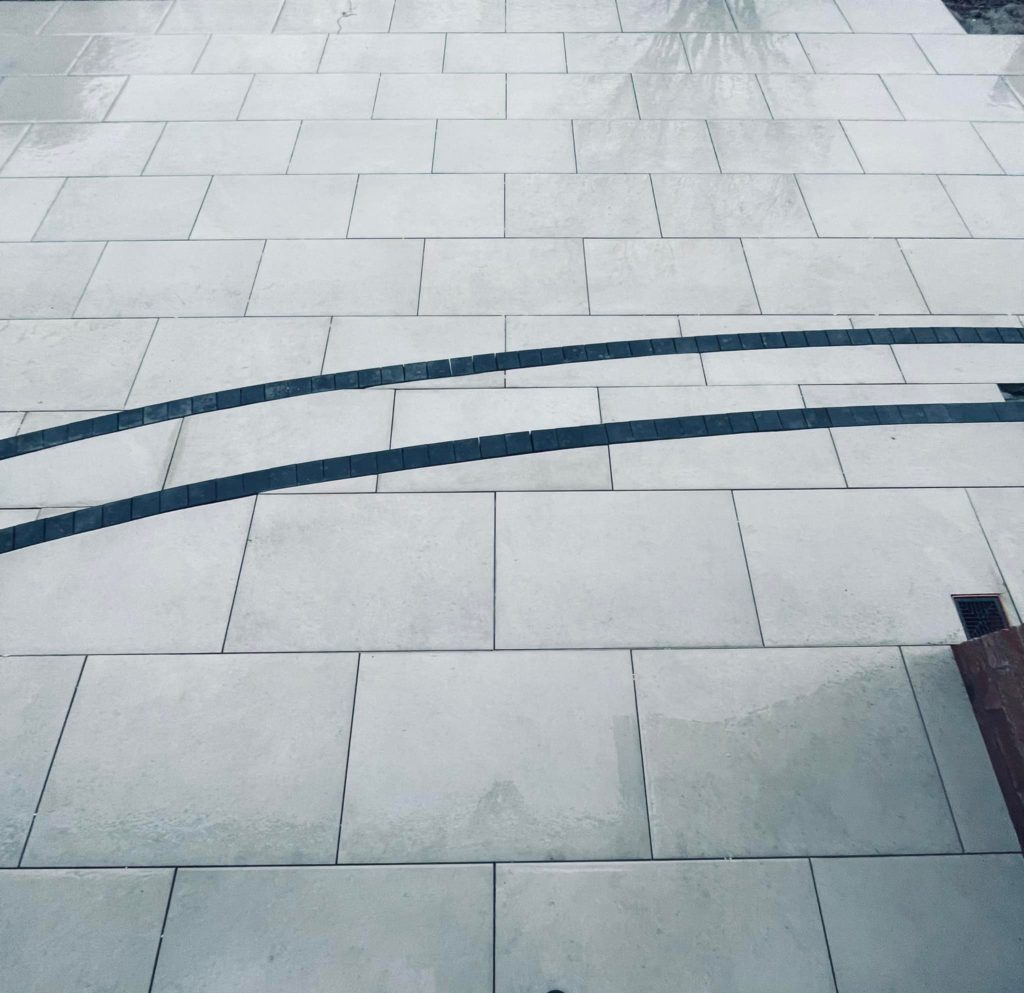How long it takes to lay a porcelain patio?
You’ve chosen to install porcelain for your patio. Everything is all set! All the materials are ready on the site, you’ve selected who is going to install it for you and are ready to have a beautiful modern outdoor space to enjoy after a couple of days or several days or a week or a couple of weeks. Let’s see.
Along with mixing the mortar and priming the slabs, one man can easily lay 10-15m2 of porcelain all doing himself. However, if you are a team of two, you can easily manage to lay 20-25m2 of the porcelain patio (no cuts or manhole).
A good enough pace to be happy with for professional laying porcelain is 10-15m2 because porcelain is all about quantity and not quantity
Usually, porcelain slabs are bigger than other paving options so, tend to cover more area than normal with fewer slabs. However, there’re also other things like priming, spacing, and leveling of the slabs that need to be carried out properly.
Priming the slabs before laying them is essential because it helps the slab bond more firmly to the mortar bed eliminating the chance of loose slab or something like that. Each joint should be of equal size for a professional finish (5mm) which can be achieved with tile spacers.
also read: Advice on priming porcelain paving
Leveling out the slabs to a correct fall is the biggest consideration I would say because it literally can make or break your patio. I’ve seen people need to pull off their new patios because the water was pooling over them due to improper levels.
Relaying with proper fall is the only option available in such a case, and the slabs also aren’t reusable anymore because they may break when lifting if they had been laid properly earlier.
“I wish I met someone who’s knows how it needs to be done before I hired a cowboy who has taken almost 3 weeks to build 11m2. I went based on the recommendations and availability😠”
Someone in a paving group that I’m a part of.

Get the DIYer’s Start to Finish Patio Cheat Sheet
✓ A handy little PDF book to sanity check things as you go and think through each step in your DIY paving project making you confident in what you are doing even when you’re not a professional paving installer.
Cuts, Manholes, and Borders

As said earlier, one person can easily achieve 10-15m2 in a day or 20-25m2 along with a labourer (one especially for laying and one for mixing the mortar, priming the slabs, and other activities). However, it doesn’t include the time required to cut for the manhole or border detailing.
Porcelain is non-porous so, it’s kind of very tough to break or crack. Hence, it’s a little hard, especially when cutting, and takes longer which also takes the cost up for the labour to lay the porcelain.
Every patio has cuts to deal with. Some have more, some have less depending on the design and number of manholes. You can add a day or two on top of your usual speed that you’ve done so far for laying the cutting part depending on the design and the number of manholes to cover.
Groundwork and Sub-base is where the most work involved
Preparing the ground to lay the patio is where it will the most time compared to laying the slabs. There’re many things like how is the current ground condition, is it fairly leveled or full of peaks and valleys? How is the access to the site, is there enough space to bring the digger to the site? All these things determine how long will it take to prepare the ground for the patio.
After laying the slabs, the grout needs to go into the joints which usually takes a day or so depending on the patio size and what is being used for pointing. Traditional sand and cement mortar take longer whereas, the brush-in product is the quickest and easiest way for pointing the patio which you can consider if you’re doing it on your own.
To read about that in more detail, check out this post on how long it takes to lay a patio in general.

Get the DIYer’s Start to Finish Patio Cheat Sheet
✓ A handy little PDF book to sanity check things as you go and think through each step in your DIY paving project making you confident in what you are doing even when you’re not a professional paving installer.
